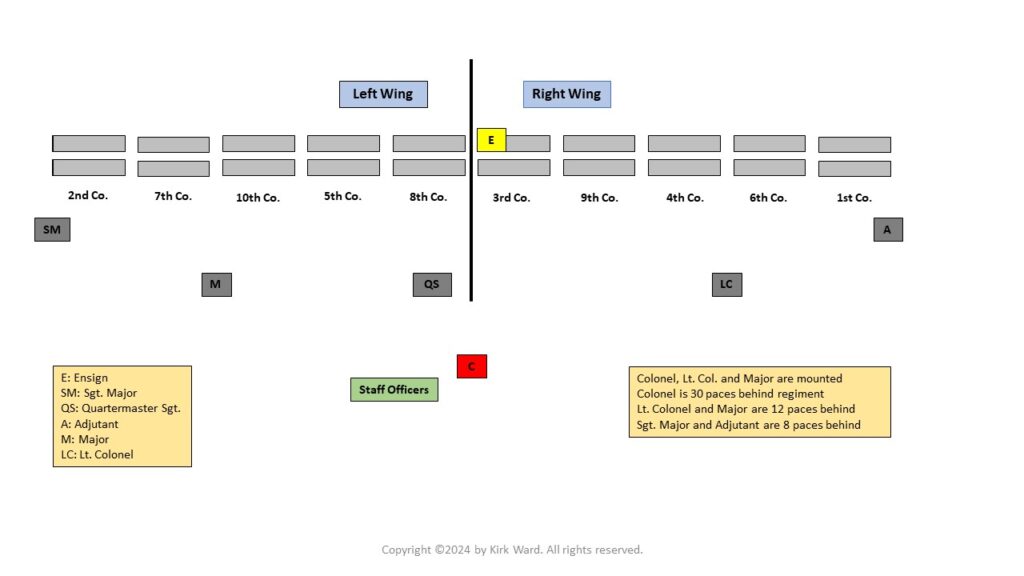Research Objective
I was curious to see if I could determine the approximate location of individual soldiers during the Fifty-First’s battles. I studied Hardee’s 1862 edition of Rifle and Infantry Tactics, hoping to find enough information to satisfy my goal. Unfortunately, I came up with more questions than answers. I am unable to prove that the 51st North Carolina abided by Hardee’s manual, and if they did, what impact the high rate of attrition among company commanders had on the way the regiment was aligned.
Anyway, I spent a lot of time on this, so I might as well share what I learned.
Regiment in Line of Battle
The companies of a regiment were lined up in two ranks by order of the seniority of the captains, based on the officers’ dates of rank. The drawing below illustrates the order, with the 1st Company being commanded by the most senior captain and the 10th Company under the command of the least senior captain. NOTE: One or two companies could be positioned forward of the formation as skirmishers.
Hardee’s manual specifies the location of a color guard, buglers, and a band. The Fifty-First had none of these, so I left them out of the drawing. The companies did each have a drummer and a fifer, but I don’t know where they were positioned.

Company in Line of Battle
The drawing below illustrates a North Carolina infantry company in line of battle. The company was placed into two ranks, with the second rank 13 inches behind the first. The soldiers within each rank stood elbow to elbow.
The battle line was divided into two platoons, and each platoon was split into two sections. The captain took position on the far right of the first rank, and the first sergeant stood in the second rank directly behind the captain. The ranks dressed on these two men.
A corporal was positioned at each end of the two platoons. The tallest corporal was on the far right of the front rank. The second tallest corporal stood at the left end of the 1st platoon, and the next tallest corporal stood to his left, anchoring the right of the 2nd platoon. The fourth, and shortest, corporal was on the far left of the second platoon.
Privates were arranged in descending height, by file, running right to left down the formation. The tallest private stood behind the 1st Corporal. The next two tallest men occupied the file to the left of the 1st Corporal, with the taller private standing in the front rank. This arrangement continued until the shortest private was positioned behind the fourth corporal.
The three lieutenants and four sergeants followed two steps behind the line of battle as gap closers to prevent straggling.

Copyright © 2021 – 2024 by Kirk Ward. All rights reserved.